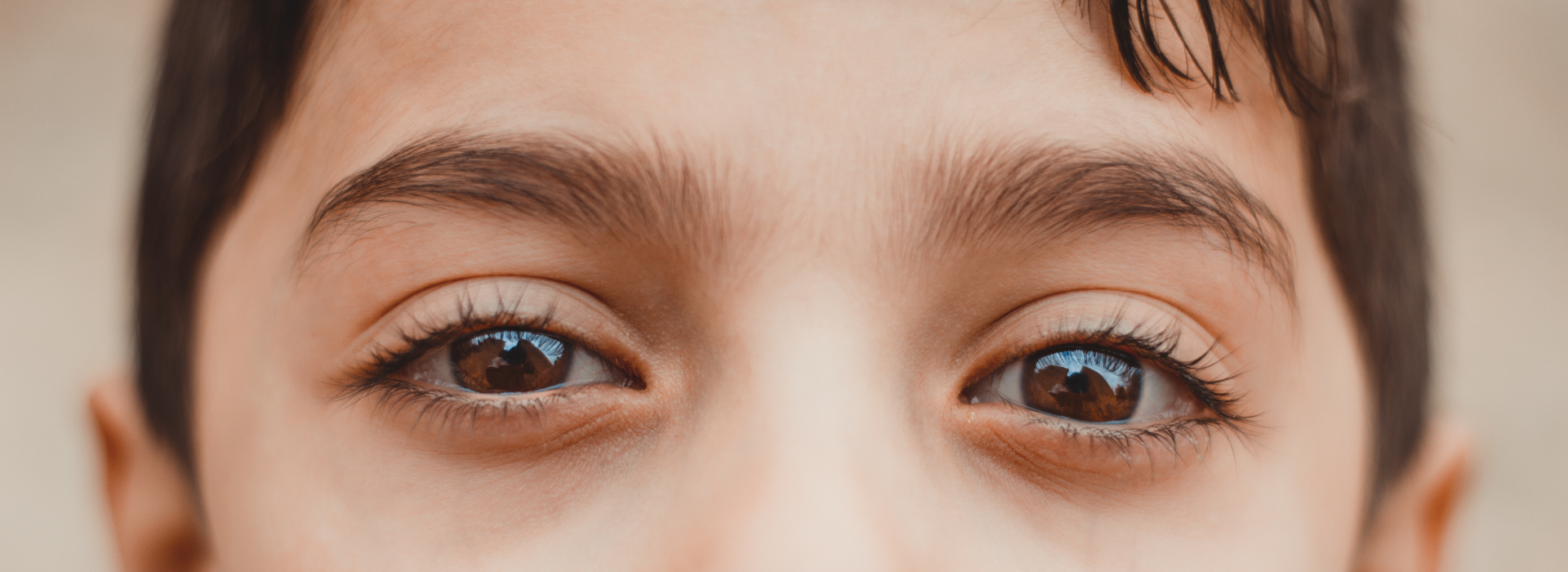

The Critical Importance of Protecting Children's Eyes from UV Radiation
The Critical Importance of Protecting Children's Eyes from UV Radiation
When we think about sun protection, sunscreen and hats typically come to mind. However, one critical aspect that often gets overlooked is the protection of our eyes—especially in children. According to the World Health Organisation, a lack of proper eye protection combined with the extensive amount of time children spend outdoors could lead to them absorbing up to 80% of their lifetime's ultraviolet (UV) radiation by the age of 18. This staggering statistic underlines the urgent need for effective UV protection from a young age to help prevent age-related macular degeneration and other serious eye conditions later in life.
Understanding UV Radiation and Its Effects
UV radiation is a type of energy produced by the sun and some artificial sources, such as tanning beds. While UV rays are invisible to the eye, their effects are very visible and potentially dangerous. UV radiation can be classified into three types: UVA, UVB, and UVC. UVA and UVB are the main types that reach the earth's surface and have profound effects on our skin and eyes. UVC is mostly absorbed by the ozone layer and does not pose a threat.
The delicate tissues of our eyes are particularly susceptible to damage from UV rays. Prolonged exposure can lead to various eye problems, some of which are irreversible. Children are more vulnerable because they typically spend more time outdoors than adults, and their ocular lenses cannot filter UV rays as effectively, allowing more radiation to reach the retina.
The Link Between UV Exposure and Macular Degeneration
Macular degeneration, specifically age-related macular degeneration (AMD), is a significant concern linked with cumulative UV exposure. AMD affects the macula, the part of the retina responsible for clear central vision, which is crucial for tasks like reading and driving. While this condition predominantly affects individuals in their 50s and older, the foundation for such ailments can begin much earlier in life due to insufficient eye protection during childhood.
Safeguarding Children's Eyes
The need to protect children's eyes from UV rays is not just a health issue but a critical preventive measure against potential lifelong vision problems. Here are some practical ways to ensure your children's eyes are shielded from harmful UV rays:
1. Wear Protective Eyewear: Sunglasses that offer 100% UV protection are essential. Ensure that the sunglasses fit well and cover the eyes completely. Wrap-around styles are ideal as they block UV rays that might enter from the side.
2. Wide-brimmed Hats and Caps: Combining sunglasses with a wide-brimmed hat or cap can reduce the amount of UV reaching the eyes by up to 50%.
3. Seek Shade: Encourage children to play in shaded areas, especially during the peak sun hours between 10 a.m. and 4 p.m., when UV rays are strongest.
4. Educate and Encourage: Teach children about the importance of wearing sunglasses and hats. Make it a fun part of their outdoor routine, and be a good role model by wearing protective eyewear yourself.
5. Quality Over Fashion: Choose eyewear based on UV protection features rather than fashion alone. Look for labels indicating 100% protection against UVA and UVB rays.
The Role of Education and Awareness
Increasing awareness about the importance of UV eye protection is crucial. Parents, educators, and healthcare providers should work together to teach children about the dangers of UV exposure and the simple steps they can take to protect themselves. Schools and community organizations can also play a role by ensuring outdoor play areas are adequately shaded and by incorporating sun safety into their programs.
Conclusion
The protection of children's eyes from UV rays is an investment in their future health and vision. By taking proactive steps today, we can help safeguard our children's eyesight and overall well-being, preventing serious eye diseases like macular degeneration later in life. Remember, every child deserves the chance to see the world clearly and brightly—today and always.
When we think about sun protection, sunscreen and hats typically come to mind. However, one critical aspect that often gets overlooked is the protection of our eyes—especially in children. According to the World Health Organisation, a lack of proper eye protection combined with the extensive amount of time children spend outdoors could lead to them absorbing up to 80% of their lifetime's ultraviolet (UV) radiation by the age of 18. This staggering statistic underlines the urgent need for effective UV protection from a young age to help prevent age-related macular degeneration and other serious eye conditions later in life.
Understanding UV Radiation and Its Effects
UV radiation is a type of energy produced by the sun and some artificial sources, such as tanning beds. While UV rays are invisible to the eye, their effects are very visible and potentially dangerous. UV radiation can be classified into three types: UVA, UVB, and UVC. UVA and UVB are the main types that reach the earth's surface and have profound effects on our skin and eyes. UVC is mostly absorbed by the ozone layer and does not pose a threat.
The delicate tissues of our eyes are particularly susceptible to damage from UV rays. Prolonged exposure can lead to various eye problems, some of which are irreversible. Children are more vulnerable because they typically spend more time outdoors than adults, and their ocular lenses cannot filter UV rays as effectively, allowing more radiation to reach the retina.
The Link Between UV Exposure and Macular Degeneration
Macular degeneration, specifically age-related macular degeneration (AMD), is a significant concern linked with cumulative UV exposure. AMD affects the macula, the part of the retina responsible for clear central vision, which is crucial for tasks like reading and driving. While this condition predominantly affects individuals in their 50s and older, the foundation for such ailments can begin much earlier in life due to insufficient eye protection during childhood.
Safeguarding Children's Eyes
The need to protect children's eyes from UV rays is not just a health issue but a critical preventive measure against potential lifelong vision problems. Here are some practical ways to ensure your children's eyes are shielded from harmful UV rays:
1. Wear Protective Eyewear: Sunglasses that offer 100% UV protection are essential. Ensure that the sunglasses fit well and cover the eyes completely. Wrap-around styles are ideal as they block UV rays that might enter from the side.
2. Wide-brimmed Hats and Caps: Combining sunglasses with a wide-brimmed hat or cap can reduce the amount of UV reaching the eyes by up to 50%.
3. Seek Shade: Encourage children to play in shaded areas, especially during the peak sun hours between 10 a.m. and 4 p.m., when UV rays are strongest.
4. Educate and Encourage: Teach children about the importance of wearing sunglasses and hats. Make it a fun part of their outdoor routine, and be a good role model by wearing protective eyewear yourself.
5. Quality Over Fashion: Choose eyewear based on UV protection features rather than fashion alone. Look for labels indicating 100% protection against UVA and UVB rays.
The Role of Education and Awareness
Increasing awareness about the importance of UV eye protection is crucial. Parents, educators, and healthcare providers should work together to teach children about the dangers of UV exposure and the simple steps they can take to protect themselves. Schools and community organizations can also play a role by ensuring outdoor play areas are adequately shaded and by incorporating sun safety into their programs.
Conclusion
The protection of children's eyes from UV rays is an investment in their future health and vision. By taking proactive steps today, we can help safeguard our children's eyesight and overall well-being, preventing serious eye diseases like macular degeneration later in life. Remember, every child deserves the chance to see the world clearly and brightly—today and always.
